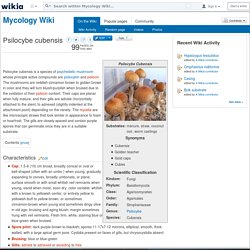

New Alexandria - Archive. Filters and Reflections Perspectives on Reality Zachary Jones, Brenda Dunne, Elissa Hoeger, Robert Jahn, editors ICRL Press, NJ. 2009 We respectfully submit this recent publication by the ICRL, a friend of our site.

From the pen of the ancient Roman poet Lucretius Caro, to the banner of the 17th-century woodcut on the front cover, and from the traditions of some Native American cultures - we are advised that when confronting the unexplained it is best to consider it from several different perspectives. More recently, a similar concept was proposed in a 2004 essay by Robert Jahn and Brenda Dunne, entitled "Sensors, Filters, and the Source of Reality. " An Error Occurred Setting Your User Cookie. Terence McKenna's "Stoned Ape" Theory of Human Evolution. Perhaps the most intriguing of Terence McKenna's fascinating theories and observations is his explanation for the origin of the human mind and human culture. To summarize: McKenna theorizes that as the North African jungles receded toward the end of the most recent ice age, giving way to grasslands, a branch of our tree-dwelling primate ancestors left the branches and took up a life out in the open -- following around herds of ungulates, nibbling what they could along the way.
Among the new items in their diet were psilocybin-containing mushrooms growing in the dung of these ungulate herds. The changes caused by the introduction of this drug to the primate diet were many -- McKenna theorizes, for instance, that synesthesia (the blurring of boundaries between the senses) caused by psilocybin led to the development of spoken language: the ability to form pictures in another person's mind through the use of vocal sounds. Psilocybin mushroom. Psilocybin mushrooms, also known as psychedelic mushrooms, are mushrooms that contain the psychedelic drugs psilocybin and psilocin.

Common colloquial terms include magic mushrooms and shrooms.[1] Biological genera containing psilocybin mushrooms include Copelandia, Galerina, Gymnopilus, Inocybe, Mycena, Panaeolus, Pholiotina, Pluteus, and Psilocybe. About 40 species are found in the genus Psilocybe. Psilocybe cubensis is the most common psilocybin mushroom in subtropical areas and the black market. Psilocybin mushrooms have likely been used since prehistoric times and may have been depicted in rock art. Many cultures have used these mushrooms in religious rites. History[edit] Early[edit] Archaeological evidence indicates the use of psilocybin-containing mushrooms in ancient times. Hallucinogenic species of the psilocybe genus have a history of use among the native peoples of Mesoamerica for religious communion, divination, and healing, from pre-Columbian times to the present day.
Psilocybe cubensis - Mycology Wiki. Psilocybe Cubensis Psilocybe cubensis is a species of psychedelic mushroom whose principle active compounds are psilocybin and psilocin.

The mushrooms are reddish-cinnamon brown to golden brown in color and they will turn bluish/purplish when bruised due to the oxidation of their psilocin content. Their caps are planar when fully mature, and their gills are adnate (horizontally attached to the stem) to adnexed (slightly indented at the attachment point) depending on the variety. The mycelia are like microscopic straws that look similar in appearance to foam or hoarfrost. The gills are closely spaced and contain purple spores that can germinate once they are in a suitable substrate. Characteristics Edit. Mimosa (Jurema) Vault.